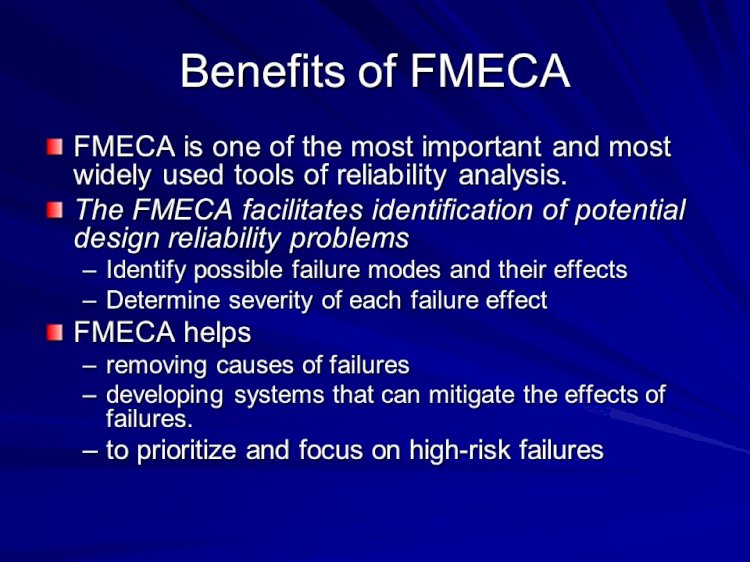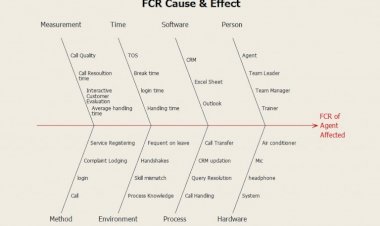Type of FMEA
FMEA Types. FMEA is a very effective tool used to avoid failures or defects in processes or products within any organization.

FMEA Types. FMEA is a very effective tool used to avoid failures or defects in processes or products within any organization.
Type of FMEA
FMEA is a very effective tool used to avoid failures or defects in processes or products. This is done by identifying the potential failure modes and basing their criticality by calculating their severity and the likeliness of their occurrence and detection. The failure modes are then ranked based on the calculation and prioritized for further action.
There is another variant of FMEA known as FMECA (Failure Mode, Effects and Criticality Analysis) in which a criticality analysis is also included. This concept has been popularized in organizations such as NASA, US Military and the NATO Military Alliance, where highly sensitive and critical projects are involved. The Criticality Analysis in FMECA identifies the potential failure modes at the functional level and calculates the criticality of its consequences.
FMEA used in other organizations generally has three types:
1. Concept FMEA
2. Design FMEA
3. Process FMEA
Concept FMEA
It is formulated in the very early stages in the lifecycle of a product or a process when they are still at a conceptual stage. It is done at a system or sub-system level before the key requirements have been decided. It targets the potential failure modes of the factors under consideration or proposed stage. Concept FMEA helps in identifying the factors that can be included in a product or process. It often acts as a precursor to the Design and Process FMEA.
Design FMEA
As it name suggests Design FMEA is used to analyze factors in the design stage of a product or process. It targets its attention to identify the potential failure modes caused by faulty design. It is generally done at the lowest possible level so that all the potential defects are identified in the design stage itself so that there are no surprises when the product or process is handed over to the Production for full rollout. Design FMEA is one of the most critical elements in the lifecycle of a product as it helps in identifying the defects before they are caused. It is a living document which is active throughout the lifecycle of a product. Whenever the product or process goes through a change or overhaul, then it is imperative to update the Design FMEA also.
Process FMEA
Process FMEA is done for the process through which a product is manufactured or assembled or a service is delivered to the customer. It aims at identifying the potential failure modes of the process caused by the weak areas in the production process. With Process FMEA, business organizations like to make their processes robust and dynamic to deal with any negative eventuality. All the likely failures are identified and prioritized so that suitable actions could be initiated and controls put in place to eliminate or reduce these failures or defects. Like Design FMEA, Process FMEA is also a living document which is active throughput the lifecycle of a process. It also gets updated whenever the process is changed for improvement.

 Pankaj Kumar
Pankaj Kumar 






























Anushtha
Process Failure Mode Effects Analysis, abbreviated as PFMEA, is a qualitative document that focuses on the processes and identifies the points for improvement. There are about 3 different types of FMEAs. They include: 1. System or Functional FMEA - This type of FMEA is used for analyzing the functionality of the developed system. In this, we examine if the system is working as intended and how it can potentially fail. 2. Design FMEA - This type of FMEA is a methodological approach that is used to identify various potential risks in the newly designed or changed version of the system. 3. Process FMEA - PFMEA is a qualitative document that focuses on the processes and identifies the points for improvement. Feel free to get in touch with our experts for more assistance on FMEA.